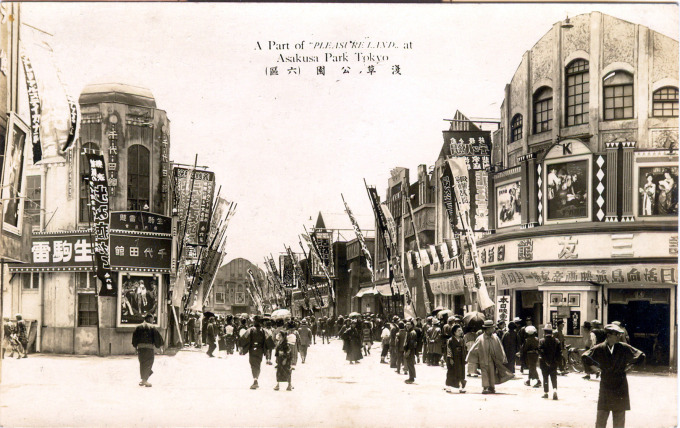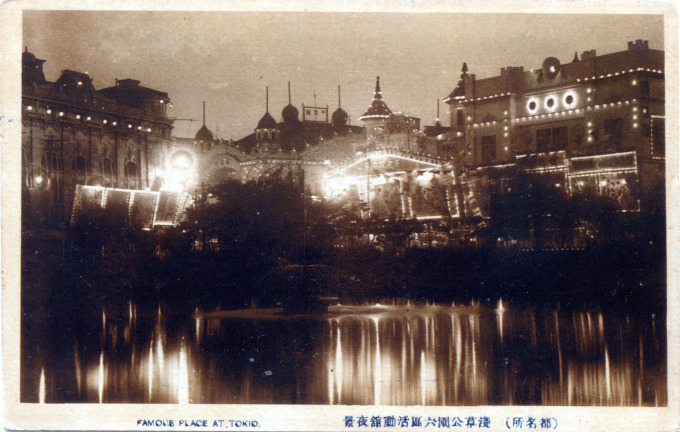
A Part of “Pleasure Land” at Asakusa Park, Tokyo, c. 1920. Here, Theater Street is anchored by two cinemas, made of ferroconcrete, across from each other: the Chiyoda (left) and the Sanyu (right). The district’s original banner-draped playhouses, mostly of wood, offered performances of vaudeville, storytelling, juggling and Shinpa (New School) Kabuki, and were joined in 1903 by Japan’s first full-time movie hall: the Denkikan (Electric Building).
For many years, playhouses and movie halls were prohibited from completely extinguishing the house lights during performances. Seating was segregated by gender into the 1920s. Unlicensed prostitution was hinted at by a regulation that all movie house usherettes wear underwear beneath their kimono.
See also:
Asakusa Rokku (Theater Street), Tokyo, c. 1930.
Asakusa Rokku (Theater Street), Tokyo, c. 1910-1950.
Ryounkaku (Twelve-Storeys Tower), Asakusa, 1890-1923.
Kokusai Theater, Asakusa, c. 1940
“[I]n an unfinished novel, The Mermaid (Kojin), Tanizaki tells what Asakusa was like in 1918. Its attractions were ‘plays of the old style, operettas, plays in the new style, comedies, movies – movies from the West and Japanese productions, Douglas Fairbanks and Onoe Matsunosuke – acrobats balancing on balls, bareback riders, Naniwa bushi singers, girl gadayu chanters, the merry-go-round, the Hanayashiki Amusement Park, the Twelve Story Tower, shooting galleries, whores, Japanese restaurants, Chinese restaurants, and Western restaurants – the Rairaiken, won ton mein, oysters over rice, horsemeat, snapping turtles, eels, and the Café Paulista.'”
– The Scarlet Gang of Asakusa, by Yasunari Kawabata, 1930
When “Theater Street” was rebuilt after the 1923 earthquake, the bawdy theaters were replaced by cabarets and dance halls. Rebuilt, again, after a wartime fire bombing, burlesque replaced cabaret; the dance halls were replaced by lounges (that Nick the Lounge Singer would’ve found familiar).



Pingback: Senso-ji : Asakusa’s Iconic Temple | Japanista
Pingback: 淺草寺 ─ 淺草的地標 | Japanista